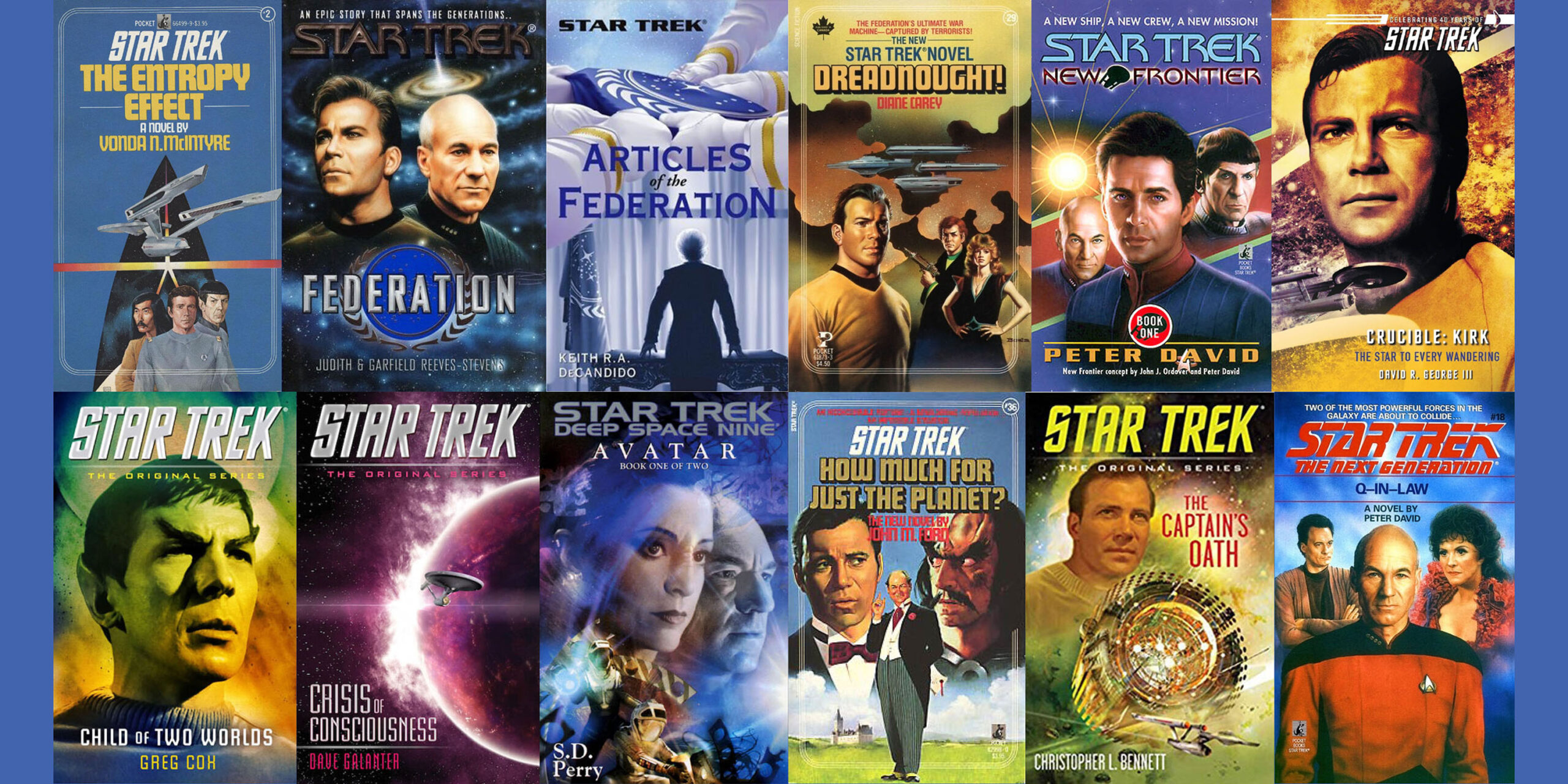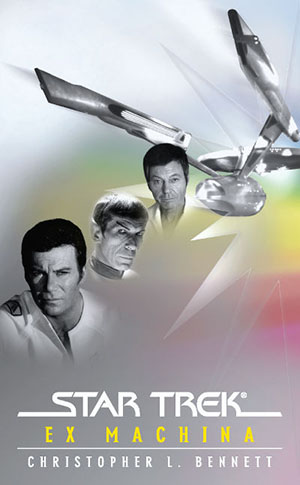
Star Trek: Ex Machina

Christopher L. Bennett is one of my very favorite Star Trek authors, and this book — his first Trek novel — is still my favorite. Based on his notes at the start and end of the novel, this is a story Mr. Bennett had been passionate about telling for years, and it shows. It was a pleasure to re-read this novel (which I did in advance of reading Mr. Bennett’s sequel novel, The Higher Frontier).
It’s wonderful to see a story set after TMP, a relatively unexplored time in Trek history. Mr. Bennett has skillfully identified so many interesting character threads that were begun in TMP that he’s able to explore in the book. We see that many members of the Enterprise crew, who had been selected by Captain Decker, find it hard to adapt to Kirk’s very different command style. We see that Spock is still struggling with the new balance between logic and emotion that he found after his mind-meld with V’Ger. We see that Bones is still unhappy about being drafted back into Starfleet and is uncertain if he should remain there.
Mr. Bennett also paid great attention to the rest of the Original Series main characters! We see that Chekov is still adjusting to his new role as chief of security (which was his new position in TMP). We see that Sulu is beginning to feel the pull towards command of a starship (which he’ll eventually achieve in the later Trek movies). The novel allows Uhura to shine, as we see that she is using her communications skills and her empathy to help shepherd the Enterprise’s complicated inter-species crew. We see that Mr. Scott is still feeling guilt at the transporter accident that killed two people at the start of TMP.
One of the key story points in the book is the idea that Decker’s Enterprise contained a crew made up of an unprecedented mix of various species. In TOS (and, frankly, most of the other Trek movies), the Enterprise crew seemed to be mostly human. But we got glimpses in TMP of many new aliens among the Enterprise’s crew, and there’s a lot of behind-the-scenes material from TMP that explores the design and background behind those various aliens. Mr. Bennett cleverly uses this material in his story. The novel spends a lot of time exploring this new multi-speices Enterprise crew. I loved seeing Mr. Bennett’s creativity and detail, as he fleshes out a number of new alien crew-members and allows us to get to know them and their species. (It’s interesting that the first Titan novel, Taking Wing — published one year after Ex Machina and set a century later — also incorporated this idea that the crew was an unprecedented mix of different species. Both novels use this as a jumping off point for interesting stories.)
I appreciated and enjoyed the book’s focus on the collision between faith and science; how those worldviews can conflict and also how they can be incorporated together. I also appreciated the many ways in with the terrorism storyline has parallels with modern 21st century events.
I enjoyed the many ways that this novel explored questions left from the TOS episode “For the World is Hollow and I Have Touched the Sky”. I was glad to see the relationship between McCoy and Natira get further explored. That was a major story point in the episode, but it all played out so quickly that it didn’t feel to me like it was developed enough. I smiled at the way the novel acknowledged the idea from Gene Roddenberry’s novelization of TMP that McCoy spent a year studying Fabrini medicine after the end of the five year mission.
Mr. Bennett is a master of Star Trek continuity, and I always love the way his novels incorporate details from across the Star Trek canon. I loved the development of Lindstrom, from the TOS episode “Return of the Archons”. I loved seeing minor characters from TMP, such as Chief DiFalco and Ensign Zaand, given attention.
Mr. Bennett made a number of efforts to incorporate the continuity from the prequel TV show Enterprise into his story. There’s a famous scene in TMP in which we see all of the previous Enterprises displayed, but of course we don’t see Archer’s Enterprise (which was created and designed decades later), so the book notes at one point that: “the image of Jonathan Archer’s Enterprise had been inadvertently replaced with that of an unused prototype based on Vulcan ships of the same period.” Very nice! It was interesting to see mention of the v’tosh ka’tur — Vulcans who embraced emotion — from the Enterprise episodes “Fusion” and “Stigma”. I did think it was a little weird for me to see how this TMP-era book incorporated the idea from Enterprise that 22nd century Vulcans had racism against “mergers” — Vulcans I who used their telepathic abilities to mind meld. That always struck me as a big continuity problem in Enterprise, because Spock mind-melded all the time in the Original Series. I love Mr. Bennett’s respect for all Trek continuity, though because I didn’t like that idea on Enterprise (I find it hard to believe that the long-lived Vulcans would be so different in the 22nd century than they were in the 23rd), I’d rather it be ignored.
Mr. Bennett also pays close attention to previous Star Trek novels! I smiled to see the continuity between Judith & Garfield Reeves-Stevens’ novel Prime Directive (which is one of several non-canonical takes on the end of Kirk’s original five-year mission) as well as the Lost Era novels and their development of the relationship between Kirk and Lori Ciana (who died in the transporter accident in TMP, as per the novelization).
One of my favorite passages in the novel was the wonderful conversation, around the middle of the book, between Spock and McCoy, with each looking to the other for advice on emotions and logic, and demonstrating their mutual respect in a beautiful way. This was a very moving scene.
I also loved the terrific short two-page scene with Janice Rand and her internal monologue. Ms. Rand isn’t a major player in the novel, but this short scene does more to develop her as a character than all of her on screen appearances put together. It’s not essential to the story, but despite that, or because of it, it was a high point of the book for me.
Ex Machina is one of my favorite Star Trek novels! It was fun to re-read it!
Please support my website by clicking through one of our Amazon links the next time you need to shop! As an Amazon Associate, I earn from qualifying purchases. That means I’ll receive a small percentage from any product you purchase from Amazon within 24 hours after clicking through. Thank you!

Leave a Reply